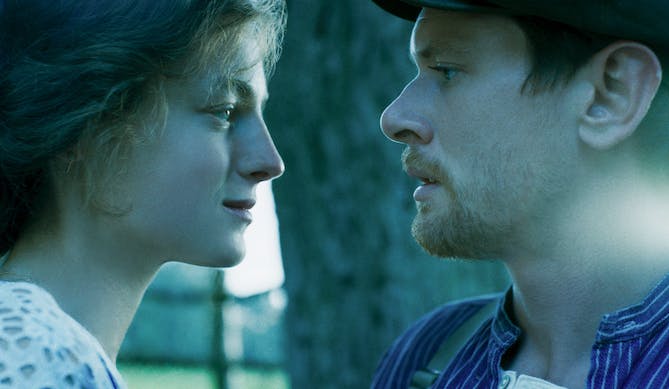Female Director Focuses on the Romance of ‘Lady Chatterley’s Lover’
In the end, though, the film is unable to make Mrs. Chatterley more than just a vessel for sexual exaltation, and it fails to reconcile Lawrence’s mind-body musings with how English society was changing in the 1920s.

It took 31 years for the completely uncensored version of “Lady Chatterley’s Lover” to be made available to the U.S. public at large after D.H. Lawrence published it privately in 1928. Known, of course, for its sexual frankness, the novel is also considered a classic by some literary critics, such as Edmund Wilson. Female writers have been more skeptical: Susan Sontag dismissed it as “sexually reactionary,” while Iris Murdoch called it a “silly book by a great man.” Some recent commentators have even deemed the book’s central relationship as abusive.
What’s initially curious about the new filmic version (playing in select theaters and available on Netflix as of Friday) is that it’s directed by a woman: Laure de Clermont-Tonnerre. Could she and her lead actress, Emma Corrin, flesh out the personality of Mrs. Chatterley beyond the female archetype and physicality of the character? Could she integrate the themes of labor industrialization and modernity in a manner less thuddingly obvious than the novel’s? The answer to both questions is unfortunately no, though it’s not for lack of trying.
The movie begins briskly with our heroine, née Constance Reid, marrying Clifford Chatterley (Matthew Duckett) before he goes off to fight in World War I. There’s not much chemistry between them on their wedding night, and a sparkless relationship continues when he returns from the war in a wheelchair and they go off to live in the countryside, in the manor house of his aristocratic heritage. Wishing for an heir, Mr. Chatterley suggests that his wife have sexual relations with another man. He reasons that because the conditions of his paralysis are not known, people will assume he can still perform his conjugal duties if she becomes pregnant.
Viewers might recognize a thread of this plot in Lars von Trier’s “Breaking the Waves,” and it’s a testament to the power of Lawrence’s writing that we’re instantly thrust into Mrs. Chatterley’s moral quandary. Unlike with “Breaking the Waves,” though, the husband doesn’t take into account a married woman’s needs, only the desire for a child and heir. Once Mrs. Chatterley has her first sexual encounter with Oliver, the estate’s gamekeeper played by Jack O’Connell, she realizes how much she’s missed intimacy and affection. What starts off as an ill-advised gambit becomes a full-on affair — and a much more complicated situation for all involved.
The movie’s sex scenes, of which there are several, are only mildly explicit, both in keeping with Lawrence’s frank depictions and yet not as graphic as they could be. The sexual language, too, is toned down from the novel. None of these are problems, as a screen adaptation must differ from its source text for a variety of reasons. The film’s main fault lies in its inability to make Mrs. Chatterley more than just a vessel for sexual exaltation, and its failure to reconcile Lawrence’s mind-body musings with how English society was changing in the 1920s.
In the latter regard, the movie makes the occasional reference to issues of class and workers’ rights. It’s clear, though, that Ms. de Clermont-Tonnerre instead prefers to focus on the more melodramatic elements of the story, with an overactive style to match — all roving camerawork and jumpy score.
Ms. Corrin, who was so effective as the young Princess Diana in the fourth season of “The Crown,” flails a bit here in an admittedly difficult role. Looking like a gaunt Heather Graham, she exudes a jittery intelligence throughout, but we never get the sense that she knows what Mrs. Chatterley’s motivations and desires are beyond the immediate and the obvious. It may be that Lawrence didn’t either, but what he did is create her on the page while not having to embody the character.
In the end, the filmmakers decided to make it an all-out romance, with a supporting character at one point even saying, “This is a love story.” Never one to disparage a tale of true love, this viewer went with it as it ends on a happy, uplifting note. Yet I couldn’t help but wish “Lady Chatterley’s Lover” had better balanced the ecstasy of physicality with the struggles of the intellect and society. Perhaps HarperCollins Publishers, which is listed in the film’s opening credits, could help produce another of its classic novels. Anyone up for a new take on “Wuthering Heights”?
_________
Correction: A woman has previously directed a film adaptation of “Lady Chatterley’s Lover.” An earlier version misstated the precedence of this adaptation’s director.

